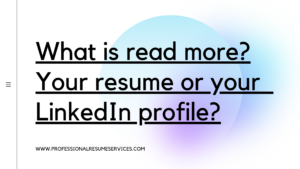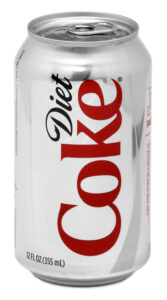Job gaps are a chapter of life that nearly all employed workers will experience at some time. For personal reasons, economic reasons, or other reasons, occasionally job gaps can be stigmatized by prospective hiring executives. In the proper light, however, you can turn those job gaps into effective, positive differentiators that prove your endurance, flexibility, and skills acquired. Here’s how to put a positive spin on your employment gaps into a powerful component of your professional story, complete with examples.
Embrace Your Employment Gaps
The primary and foremost step to making an employment gap work in your favor is to accept it.
Whether it be that you were at home raising a child, had taken a break to nurse a family member, were traveling, undertook other studies, or even utilized the time to address health concerns, an acceptance of these facts can actually make your resume more human and make you more relatable to potential employers.
Example: Sarah, a marketing professional, had, in fact, stayed at home for two years to care for aging parents.
Rather than try to disguise this break in her work history, she put it on her resume and explained skills she had gained as a care provider, like patience, time management, and empathy (all great “soft skills”).
These attributes translate into just about any career situation, and Sarah was using them to demonstrate her well-rounded abilities.
Emphasize Skill Development
Employment gaps can also be an opportunity to gain by way of experience, both personal and professional.
If you utilized that time to undertake some courses, learn a new skill, volunteer, or get involved in something that can contribute to your growth as an individual, mention those in your resume and cover letter.
Example: John, who worked as an information technology specialist, got laid off and experienced one year of unemployment.
During his unemployed year, John took online courses on cybersecurity, volunteered at a local non-profit by doing installations of secure networks for that non-profit, and attended seminars in his profession.
When he applied for new jobs, John was able to add to his resume his proactive measures to keep up with industry trends and his demonstration of lifelong learning.
Use Freelance and Independent Contract Work
Freelance and contract employment that is done in between jobs can demonstrate a lot of initiative and commitment on your part.
You can also get diverse clients and projects which will be added to your resume as well as your professional portfolio. Highlighting this type of work can be a simple yet effective way to put a positive spin on your employment gaps.
Example: Maria was a graphic designer who had freelanced for the past 18 months after she had moved to a new city.
She had been working with several small businesses in the city during that time, which allowed her to do website design and branding.
She also used these in her portfolio, which showcased her versatility and ability to meet the needs of several different clients.
It also showcased that she had worked actively in the past 18 months of her career, even if she was not in a traditional full-time job.


Emphasize Transferable Skills
Acknowledge that sometimes, the gaps in employment can translate into having diverse experiences in other areas or types of work.
Actually, demonstrate the skills you learned during your time off that may get transferred and be applied in the position you want to occupy at your disposal.
Example: For instance, there was Alex, a former teacher who had taken three years out of the field to try to start a small business of his own.
Despite his business’s eventual failure, while it was in operation, Alex learned valuable life skills in project management, marketing, budgeting, and customer service.
When he returned to the field of education, Alex was able to use these skills as a foundation on which to show how they would work as a means to help augment his administrative and teaching skills.
Put A Positive Spin On The Gaps
When speaking of these gaps in interviews or in cover letters, frame the gaps positively. Talk instead of where you were able to travel during that time, not of the gap itself.
Example: Emily, a project manager, had been away for a year traveling and experiencing new and different cultures.
Rather than stating her travel experience, she stated how her year out helped her enhance her cultural learning , develop her problem-solving skills, and diversity in her capacity to work with all types of work teams.
Such a positive connotation said that her experience away from work was a learning experience and added to her professional value.
Network and Seek Recommendations
Networking can also work as a effective means of describing and justifying your employment gaps with a positive spin.
Ask for recommendations from those with whom you worked during the period of employment gap, which may include your freelance clients, volunteer coordinators, and even your course instructors.
Example: Raj, an engineer, took a leave of two years to complete his Master in Environmental Engineering.
In the interim, he volunteered with a few environmental organizations and managed to get a few projects completed.
He sought recommendations from his professors and volunteers’ coordinators, who could vouch for his hard work and skills.
Such recommendations helped cover up the gap in his work experience and added a good endorsement of his capability.
Demonstrate Resilience within the Gap
Sometimes, employment gaps can be due to trying times. Instead, make them a time of showcasing your strength and ability to thrive over hard times.
Most employers are looking for this characteristic since it lets them know that you can handle challenging times, can adjust, and respond even stronger.
Example: Lisa, as a sales manager, had a debilitating health condition that left her with a large gap in employment.
She detailed, in her job applications what work she had undertaken to stay up-to-date with industry changes while she was unemployed. She was then able to market her resilience, focus, and commitment to her career, taking what might be a detrimental gap and turning it into a tale of personal resilience and career determination.
Add the Context in Your CV
Having a small mention about the employment gaps in your resume itself can, in some way, provide some context for the prospective employers to work upon.
It can help in preventing some misunderstanding and in making you look as transparent with nothing to hide. Put it out there. Let them know there was a gap.
Example: Mark, a software engineer, had a layoff that led to a nine-month employment gap.
He wrote a brief note in his cover letter detailing the layoff and what he had been doing during the gap period, like making contributions to open-source projects and completing a cloud computing certification.
The honesty made the prospective employers visualize the gap and what he did to remain relevant in his field of career.


Reframe The Narrative
Reframing your story means shifting the emphasis from the gap to the growth and accomplishments during the gap period.
This can help you draft an engaging story concurrent with your career objective.
Example: Laura had a two-year break from a position as a financial analyst to start a family.
She did so by highlighting the financial planning and budgeting skills she acquired during this time and the online financial modeling courses she enrolled in during that time.
By highlighting the personal and professional development she was engaging in during this time, Laura was able to construct a positive and forward-looking narrative.
Get ready for Questions in the Interview
Being able to provide answers to questions relating to any gaps in your employment is very important.
Practice your responses to ensure they are concise, honest, and put a positive spin on the experience.
Example: Responding in an interview to being asked about the two-year hole in his resume, software engineer James spoke about how he had spent those two years indulging his love of travel, as well as freelancing on coding projects he was interested in.
He spoke of the varied range of projects that he was exposed to, the range of programming languages he had to learn, and how, as a result, he became a more rounded developer.
In plotting that information in a well-prepared response, he took what might have been a red flag and made it so that he was still keeping engaged as a professional.
Landing the Job
Gaps in employment need not dissuade you from your career.
On the other hand, you must derive the maximum benefit from the same
By recognizing the gap, concentrating on skill acquisition, using freelance to your advantage, carving out transferable skills, positioning the gap positively, building networks, demonstrating resilience, providing the context in the resume, recasting your story, and preparing for the interview questions, you will be in a position to make the employment gaps a very potent tool and be able to put a positive spin on your situation.
Not only do the strategies minimize the visibility of the gaps, they can also make the gap very attractive and beneficial to the overall professional development.
Once again, please remember that everybody has a unique career and the employment gaps are nothing but mere chapters in the professional story.
If properly handled, the gaps can be a good story to illustrate your adaptability, never-ending learning, and resilience in any situation, making you a very attractive option to the prospective employer.







